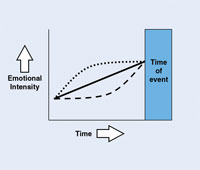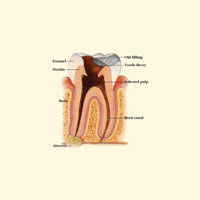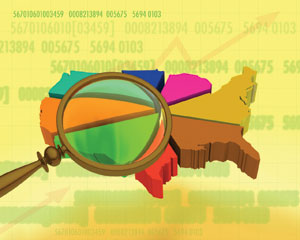“Where have all the technicians gone?” This is a question that we all may be asking ourselves in the near future. Why? Well, it goes something like this: we all have been so busy just keeping up, worrying about fees, insurance, marketing, personnel issues, which cement to use, continuing education requirements, paying for the practice and home, having no time to read a newspaper (let alone all the professional journals), the stock market, OSHA, HIPAA, etc, that we have forgotten about some fellow professionals who should be very near and dear to us, our extended staff, our dental technicians. Just imagine our dental world without enough highly skilled dental technicians. We studied how to be dentists, but our training was not adequate to substitute our hands and minds for theirs. Think about it, with everything already on our plate, do any of us have the time, let alone the desire, to spend our remaining hours after seeing patients, waxing, casting, stacking porcelain, pressing porcelain,trimming dies, scanning dies, and so on? To be sure, many of our retired predecessors remember a time when they left the office at 10 pm after a long day of patients and lab work. Many of them also remember working 6 days a week to keep up. They did not have nearly the number of restoration choices, and their work was not as high in production numbers as ours. The arena of patient-expected aesthetics was much less demanding than today. Nowadays, it would be even more difficult to pull off the miracle of doing our own laboratory work, even if we knew how to do it. Dental technicians do more than just work for us,they make all of us look great! They make long-lasting, strong, aesthetic restorations that serve our patients for many years. It is not easy for them to transform our intraoral records and impressions into quality, functional,and aesthetic restorations. Despite the mentally and physically challenging work they face every day, 5 to 6 days per week, they do what we ask to the best of their ability day after day, week after week, year after year. Together, with our dental technicians and chairside staff, we have delivered the best dental care to patients in the recorded history of the world. Unknown to us, as we go through our busy days from patient to patient, the field of dental technology is being challenged in ways we have never seen. Consider the following facts on the looming dental laboratory technician shortage:
��� The National Association of Dental Laboratories (NADL) has predicted that in 10 years, 40% of all current laboratories will be gone because of a shortage of dental technicians.
��� Technicians that did the majority of prosthetic work delivered in 2001 were over 63 years of age.
��� Thirty-two of 62 ADA-accredited dental laboratory programs have closed since 1983.
��� The number of applications to the remaining dental technology programs has decreased steadily since 1994.
��� The number of technicians leaving the profession is increasing.
��� Foreign market penetration is beginning to occur. (Fine for our pocketbooks in the short run, but will you be willing, or able, to do your aesthetic cases long distance with a technician in China in a time zone that is 12 to 13 hours apart from yours?) We have to ask ourselves why these trends are being reported. Cheryl Parker, the laboratory liaison from the ADA, says, “There is just not much advantage, salary-wise.” In addition, she goes on to say, “The profession (of dental technology) is just not known.” Gary Gann, CDT, of the NADL stated, “The cost of dental technology programs versus what students are able to make may be a factor for decreased enrollment.” If one reviews the wages of dental technicians published in Lab Management Today (October, 2002), one can readily confirm this diagnosis. The highest wage earned is by ceramists with more than 8 years of experience at a national average of $22.27 an hour. The restof the technicians make much less. Compare this with my daughter who graduated after 2 years of college as a dental hygienist, and landed her first job at $23 an hour. I know dental technicians who recently graduated after 2 years of college at the same school (now closed) and started at less than $10 per hour! We, as fellow professionals, have a huge responsibility and a lot at stake in seeing that our extended staff is healthy, properly trained, professionally fulfilled, and financially secure. Sure, it is not our responsibility as dentists, but the fact of the matter is that our dental technicians depend on our success as well as our inclusion of them in our overall business vision. Just as the more mature and experienced technicians and laboratory owners are retiring or leaving in record numbers because of the high- stress job requirements, our demand for their expertise is increasing because our collective technical and aesthetic skills are improving. Our patients, who are growing more sophisticated in their expectations, are also demanding highly aesthetic and complex solutions to their problems. The laboratories that will be capable of creating the higher-end work needed will be fewer and far between. They will be charging much higher dollars than most doctors will be able to afford in the continuing low-fee insurance culture that we have spawned and nurtured over the past four decades. So, now that you are probably completely depressed at this news and ready to shut the lights out right after the last technicians leave the field, what can you do?
��� First, recognize that we do in fact have a serious and collective challenge facing our profession.
��� Start talking about it with your colleagues and in your dental societies and organizations.
��� Encourage the manufacturers related to the laboratory industry to get involved with us to explore the challenges and take part in the solutions.
��� Begin to understand the relationship of our office fees to the laboratory fees. (What has happened to our fees versus inflation versus laboratory fees? Did you know that a crown, plus high noble metal, which a lab charged $85 for in 1978, would be worth approximately $246 in toda’s dollars?)
��� What about a separate laboratory bill for our patients? We are one of the only professional groups to incorporate lab fees within our surgical fees. Why? What is the effect on the laboratory industry of these hidden charges? We need to examine our profession and what kind of relationship we have with our dental technicians. More importantly, what kind of relationship will we need with them in the future? We need to develop and foster close professional friendships with our dental technician team members. We need to make sure that they are valued and included in our profession. They should be invitedand in attendance at more of our dental meetings, involved in our vision, part of our decisions, and side by side with us in developing strategies for the future work to be done in and on our profession. Above all, they deserve to be treated fairly for what they do for us emotionally and economically. If we do these things with them, then I predict we will see the trend toward a dental technician shortage reversed over time. Our actions must speak our vision. What will you do? Our future, and that of our staff and patients, depends on our individual and collective answer.
Biography:
Dr. Adams is an internationally recognized speaker presenting seminars centered on a variety of philosophical, communication, clinical, and aesthetic topics as seen from the dental laboratory’s perspective. He is currently a technical consultant for DH Baker Dental Laboratory in Traverse City, Michigan. He is also a lecturer and doctor/laboratory liaison for the live-patient indirect composite courses held at the Michigan Dental Institute located in Traverse City. He can be reached at (231) 946-8880.











